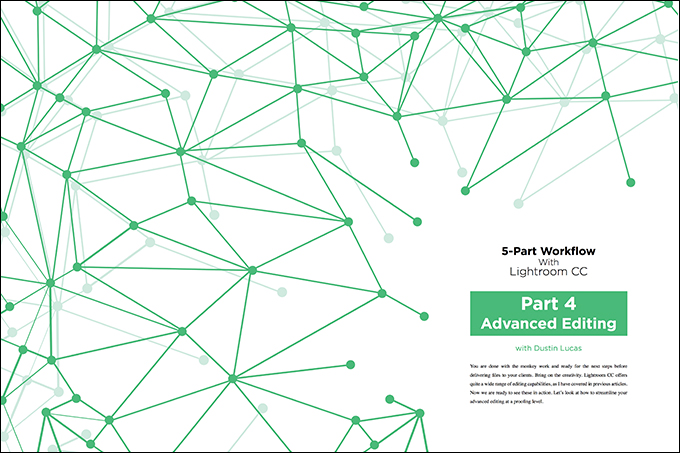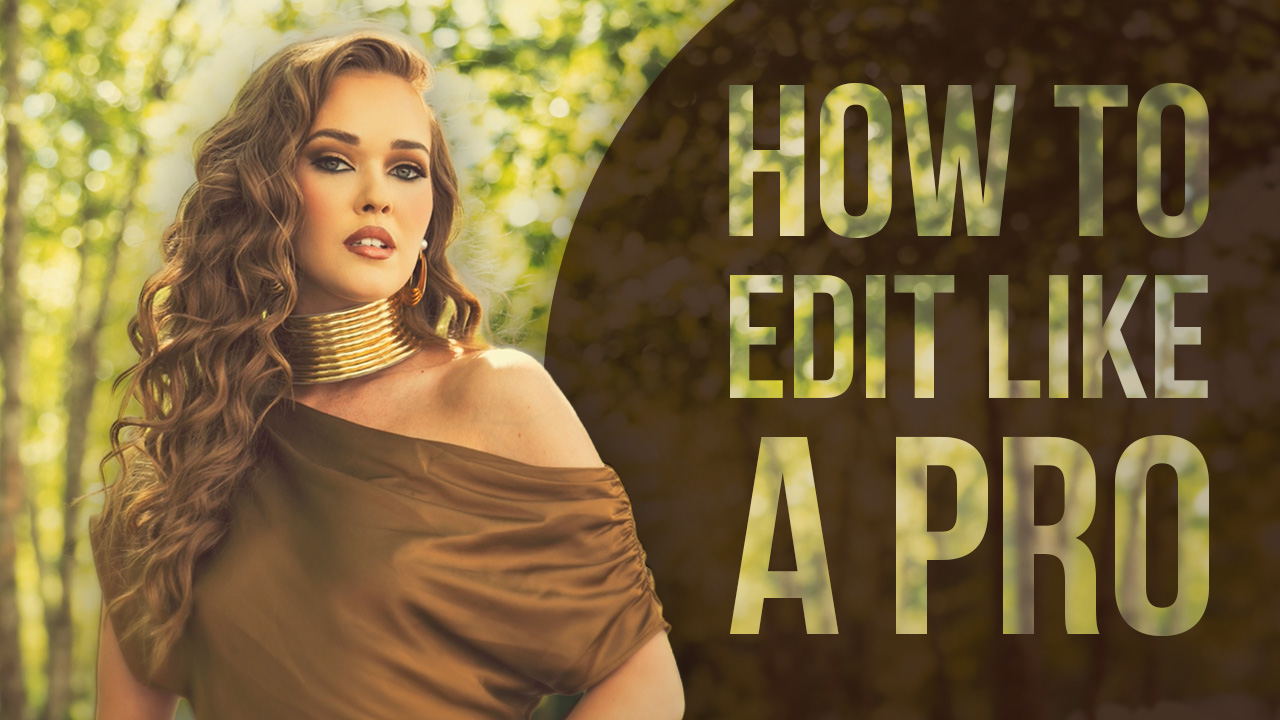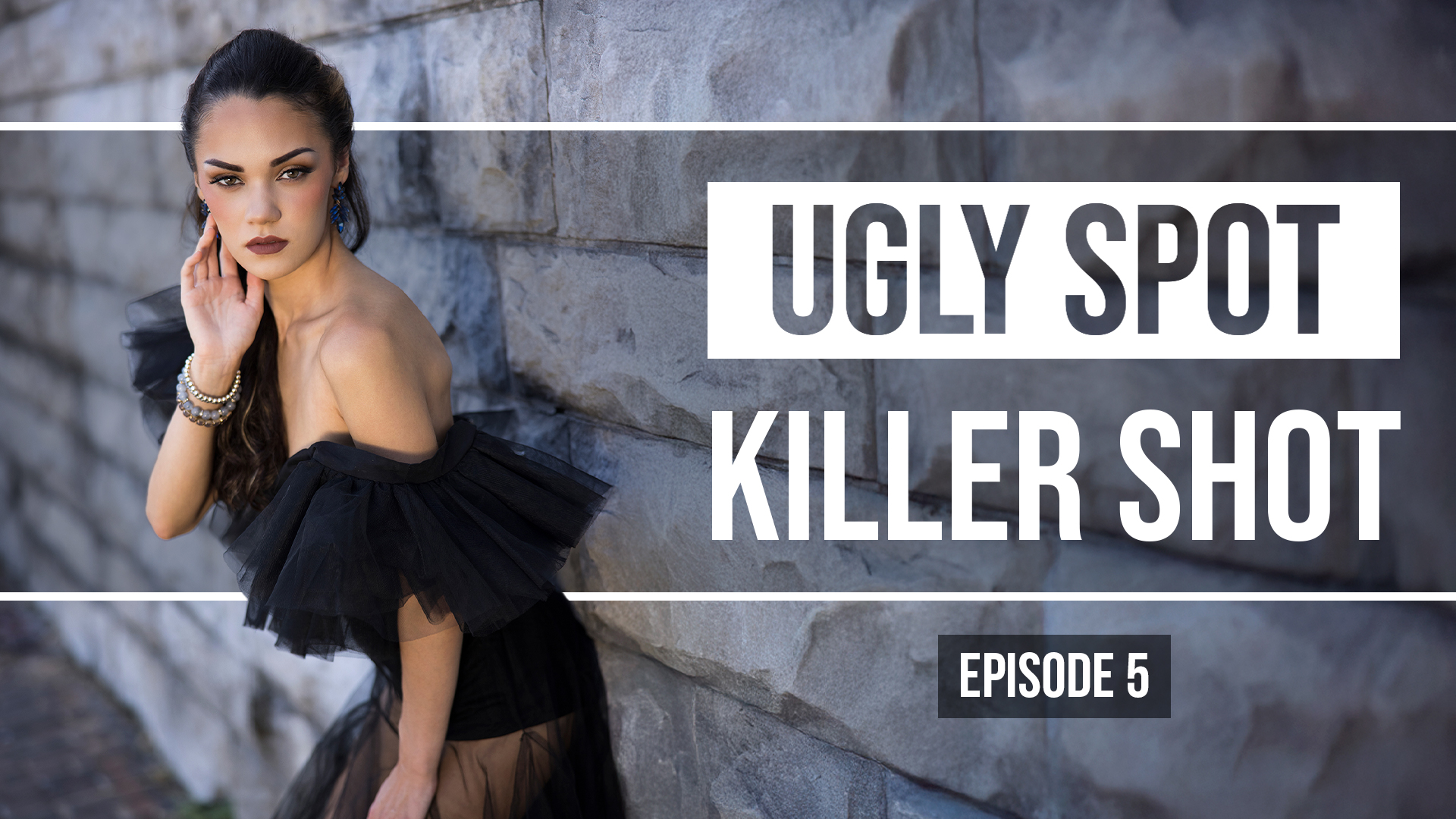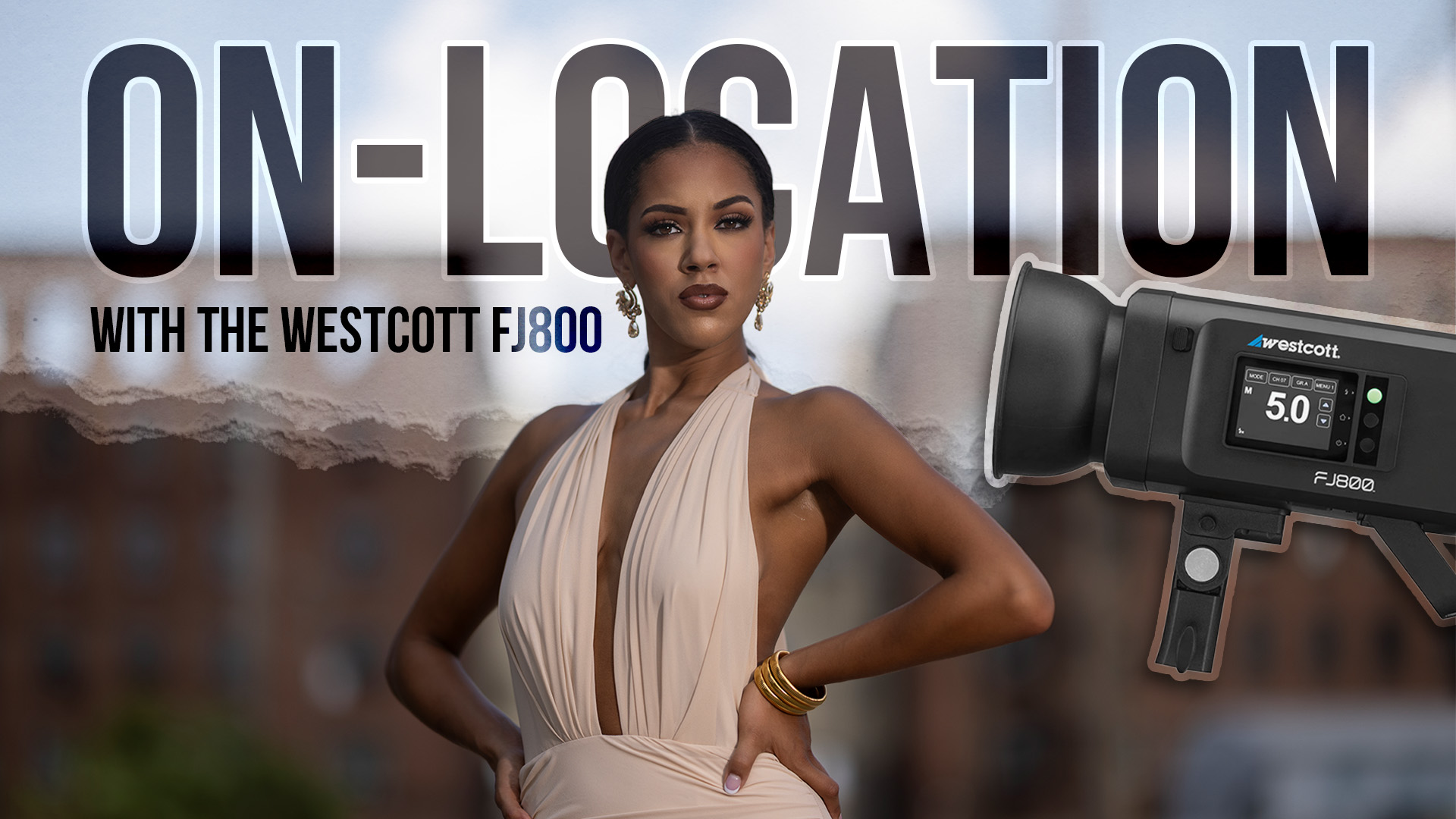5-Part Workflow With Lightroom CC Part 4: Advanced Editing with Dustin Lucas
You are done with the monkey work and ready for the next steps before delivering files to your clients. Bring on the creativity. Lightroom CC offers quite a wide range of editing capabilities, as I have covered in previous articles. Now we are ready to see these in action. Let’s look at how to streamline your advanced editing at a proofing level.
Managing Files
At this point, we have 5-starred, selected and color corrected all 862 files. This is a great place to start organizing these files for further processing. If you are unfamiliar with managing files in Lightroom, please refer to my previous article, “5-Part Workflow With Lightroom CC Part 1: Storage & File Management.” With the Raw files organized and stored in Lightroom, we need to continue with file management for different types of edits. Keep in mind this workflow is for a single client catalog and not a master catalog.
Navigate to the Library module and begin to create subfolders in the Short Wedding folder. This moves the Raw files outside of Lightroom. (Image 1ab) I suggest leaving all the files in the RAW folder and using Lightroom to organize these files as we have before. Creating and moving folders in Lightroom is time-consuming and doesn’t create copies for you. Previously, we created Collections to manage the Original, Select, Black and White, Creative, etc., and I suggest staying with this workflow. (Image 2) It is so much faster and more efficient to work this way. Since we only have one Raw file saved and we want to make multiple types of edits to it, we need to create virtual copies.
Virtual copies are exactly what they sound like, and they do not save to your HDD. This is important to remember because they exist in Lightroom only as copies. You must export these copies like any other file to apply the adjustments and create a new image file.
They are easy to create. Select the files and hold CMD and the apostrophe key (’). (Image 3) Once the virtual copies are made, they are automatically selected and ready for you to drag them into the proper Collection. (Image 4) Another technique is to select the files, create a new Collection and check the options Include Selected Photos and Make New Virtual Copies. (Image 5) This is useful for custom Collections. Taking this a step further, I use color labels to designate what type of edit is to be applied. (Image 6)
Using Local Adjustments
Let’s now process the creative edits a step beyond basic color correction. This is where hotkeys and knowing how to navigate Lightroom becomes crucial to efficiency. Using local adjustments is great for cleaning up your creative edits. You can integrate these into the color-corrected files, but you have to think of these files as proofs, not prints. This is how you add value to the other edits and make it worth the time you spend processing them.
Before getting into the different brush types, we need to get familiar with the preset effects. Select the adjustment brush to get to these effects presets. Default single-adjustment effects are listed in the upper section, and the multi-adjustment effects are below. (Image 7) You can create and save custom presets. I suggest starting with the default ones and building from there. I have made a custom dodge/burn and a skin-softening effect. To do this, select a current default effect and add some adjustments to it. (Image 8ab) For burn, I added some contrast, dropped highlights, and dropped the clarity and saturation. Drop down the Effects menu and select Save Current Settings as New Preset. (Image 9) Name the preset by the area affected first, then the effect—i.e., “skin soften, teeth whiten, etc.” This organizes things and makes selecting the appropriate brush much easier.
Select a file and strike the “K” key. This activates the most versatile tool, the adjustment brush. From here, click and drag your cursor over the area you want to treat. A newer feature that Lightroom added is Auto Mask. This works well in high-contrast areas where neighboring colors have distinct edges that separate the two. (Image 10) To activate this feature, strike the “A” key. You can remove the effect or mask by holding down Alt + Option and clicking the unwanted areas. (Image 11)
You can view the mask by either scrolling over the edit pin or checking the box labeled Show Selected Mask Overlay. (Image 12) Decreasing the brush size is easily done by repeatedly striking the “[” key or increasing it with the “]” key. After you’ve painted the mask, hold Option and click the Edit pin. Drag to the left to lessen the effect, stay at the center to keep the same preset settings, and scroll to the right to increase it. (Image 13) You can do this with all the local adjustment tools as well. The adjustment brush is great for custom masking your dodge/burn and skin smoothing effects. Move into Photoshop when you need more extensive work done.
The radial filter can be very powerful when you want to lead your viewer to the subject. Activate this tool by holding Shift + M. The best strategy for this tool is to click in the center of your subject and drag the oval/circle outward. (Image 14) Hold Option while dragging to achieve a perfect circle. (Image 15) This tool allows you to custom-mask in the effect as well. Hold Shift + T to toggle the standard brush, and then hold Option to toggle the Erase Mask feature. I like to use this for burning down everything but the subject. This works well with close-up shots with high contrast. Another quick way to utilize this tool is to draw your oval in a small area and invert the mask by striking the apostrophe (‘) key. This leaves an image underexposed and brightened specifically for the subject. (Image 16)
Next, the Graduated Filter effect is another great tool for those who use the rule of thirds a lot. Strike the “M” key, click on the opposite side of your subject and drag the edge of the mask just past them. As you drag the cursor, the effect begins where you first click, and feathers the mask to the opposite side. (Image 17) If you would like to adjust the width on both sides, just hold the Option key and drag the cursor. This tool has the same capabilities to custom-mask out the unwanted areas as the radial filter. I like to use this tool for darkening two-thirds of the image where the couple is off to the side. Also, this effect is great for burning down a sky. (Image 18)
Spot Removal
Lightroom has made quite a lot of improvements to the accuracy of this tool. Strike the “Q” key, which brings up the Spot Removal tool. There are two types: clone and heal. If you are familiar with these from Photoshop, they work very similarly. Cloning replaces the areas selected with a copy of another area. Healing samples the area around the selection and renders an approximate representation. Toggle between these by holding Shift + T. Begin by selecting an area you want to remove; a blemish or pimple is a great place to start. (Image 19)
Lightroom auto-samples from a similarly colored and toned area in the image. You can adjust the sample area by dragging the other circle. (Image 20)
Cropping and Straightening
This is a very subjective adjustment at a proofing level. It is a very intuitive tool in Lightroom. Striking the “R” key applies the cropped grid to your image. I usually keep the image locked to the original aspect ratio until I bring the image into Photoshop. (Image 21) From here, I can straighten the image by holding the CMD key and drawing a line on a vertical or horizontal axis. (Image 22) Auto-straighten to the rescue. I wish they had created a Quick Develop option for this instead for batching. By selecting Constrain to Image, an image that is cropped remains within its borders. This is a great option to have selected when using automated adjustments. What I like about Lightroom’s nondestructive functionality is that you can always reset this crop and get those pixels back when you need to print large. In Photoshop, you have to save out multiple versions, and then it gets messy organizing the files.
Conclusion
Lightroom offers vast capabilities to your editing style. I’ll cover the other adjustment tools in the final article, “5-Part Workflow With Lightroom CC Part 5: Output & Archive Strategies.”
At this point in the process, we are ready for online viewing and/or a live preview with the client. I am comfortable showing these images to my client. I will work a few images extensively in Photoshop for that wow factor as well. Nothing better than having a canvas print ready as a surprise for the newlyweds. Usually a great sale.







This Post Has One Comment
where’s the “advanced” part?